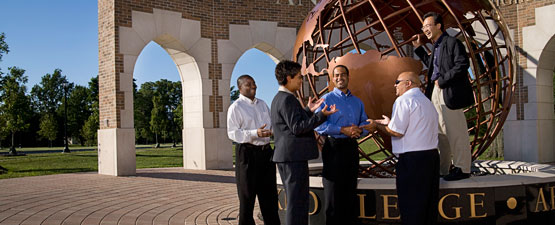Professional Dissertations DMin
Date of Award
1987
Document Type
Project Report
Degree Name
Doctor of Ministry
College
Seventh-day Adventist Theological Seminary
Program
Doctor of Ministry DMin
First Advisor
Robert M. Johnston
Second Advisor
Reuben A. Hubbard
Third Advisor
Wesley E. Amundson
Abstract
The purpose of this project is to study missiologically the Seventh-day Adventist (SDA) Church history in Japan after World War II, because it has been often said that the Japanese church membership has not grown so fast as other countries in the Far Eastern Division. Why is the SDA mission so difficult in the country? In order to solve the problem, I surveyed, analyzed, and interpreted descriptively the work of the church.
After dealing with an overview of the prewar and postwar political, geographical, economic, social, and religious conditions of the country, the postwar church history was divided into four ten-year periods: restoration and advance (1945-1955); dependence on missionaries (1956-1965); transition from missionaries to national workers (1966-1975); and independence from missionaries (1976-1985). In each period the missionaries and Japanese worked very hard, so the slow growth of the church was not due to laziness of the workers.
Generally the mission has been traditionally carried out through institutions (radio broadcasting with Bible correspondence courses, publishing house, hospitals, schools, and others) and departments (Sabbath School, lay activities, youth, and others) of the Japan Union. Although the church was able to get a large number of baptisms during the postwar religious interest, the church began to meet difficulty in soul-winning in harmony with the economic development which produced materialism and secularism of the country. On the other hand, as a whole, the growth of Japanese economy helped the church improve many areas of the work financially, especially the building projects of churches, hospitals, schools, and others.
It is absolutely necessary for the church to grasp clearly the context of the country, namely the culture, so that the church may make an effective strategy of mission for the nation. Since the church members live in different settings with different gifts, they should be motivated for missionary work according to their settings and gifts. Additionally people have different felt needs, so the church should approach them with the multiple methods of mission so that they might be led to the real need, Jesus Christ as their personal Savior.
Subject Area
Seventh-day Adventists--Japan--History, Evangelistic work--Seventh-day Adventists--Japan
Recommended Citation
Shinmyo, Tadaomi, "A History in Missiological Perspective of the Seventh-day Adventist Church in Japan from 1945 to 1985" (1987). Professional Dissertations DMin. 230.
https://dx.doi.org/10.32597/dmin/230/
https://digitalcommons.andrews.edu/dmin/230
Creative Commons License

This work is licensed under a Creative Commons Attribution-No Derivative Works 4.0 International License.
DOI
https://dx.doi.org/10.32597/dmin/230/
Files over 3MB may be slow to open. For best results, right-click and select "save as..."



